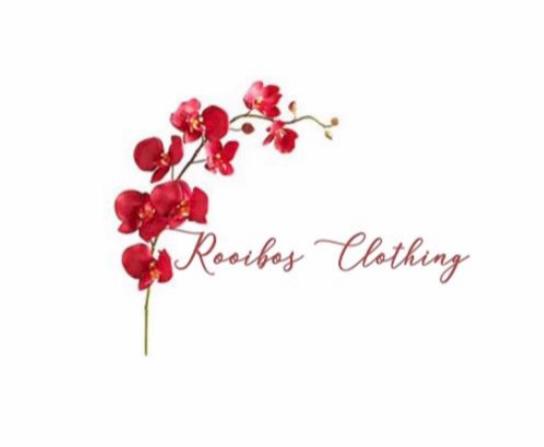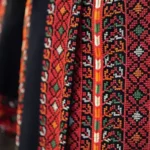Ankara fabrics : A Vibrant Tapestry of African Culture
Introduction
Ankara fabrics, also known as African wax prints, are a kaleidoscope of colors, patterns, and cultural significance that have woven themselves into the fabric of African societies and beyond. These fabrics are not just textiles; they are vibrant expressions of Africa’s rich history, diverse traditions, and evolving fashion. In this extensive exploration, we will delve into the fascinating world of Ankara fabrics, tracing their origins, understanding their significance, and celebrating their global influence.
African wax prints, Dutch wax prints or Ankara, are omnipresent and common materials for clothing in west Africa and Central Africa.
Wax prints are a type of nonverbal communication among African women, and thereby carry their messages out into the world.Some wax prints are named after personalities, cities, buildings, sayings, or occasions. The producer, name of the product, and registration number of the design is printed on the selvage, thus protecting the design and attesting to the quality of the fabric. Wax fabrics constitute capital goods for African women. They are therefore often retained based on their perceived market value.
This unique textile is more than just a piece of cloth; it embodies a rich tapestry of culture, craftsmanship, and fashion. In this comprehensive exploration, we will delve into the history, production process, cultural significance, and contemporary influence of Ankara fabrics.
Historical Background
Ankara fabric has a fascinating historical background that is deeply rooted in African culture. Its origins can be traced back to the Dutch wax-resist dyeing technique. In the 19th century, Dutch traders introduced Indonesian batik to West Africa. This fabric was initially intended for Southeast Asian markets but soon captured the imagination of Africans who embraced its vibrant colors and intricate patterns.
Over time, African artisans adapted and localized the technique, creating a unique and distinct style that we now know as Ankara fabric. Today, Ankara fabrics have become a symbol of African identity and pride, transcending borders and cultures.
Chapter 1: The Origins of Ankara Fabrics
The history of Ankara fabrics is a complex tapestry that weaves together African, European, and Asian threads. To understand their origins, we need to travel back in time to the 19th century when Dutch wax prints made their way to West Africa. Dutch traders, primarily from the Netherlands, brought these colorful prints to Africa, intending to imitate Indonesian batik fabric, which was popular at the time. However, these fabrics underwent a transformation as they adapted to African tastes and customs.
Ankara fabrics, as we know them today, are characterized by bold and intricate patterns, often drawing inspiration from African proverbs, folklore, and nature. Over time, they have become synonymous with African identity and cultural pride.
Chapter 2: The Cultural Significance of Ankara Fabrics
Ankara fabrics hold deep cultural significance across the African continent. They are used in various rites of passage, such as weddings, naming ceremonies, and funerals. Each design and color carries specific meanings and symbolizes different aspects of life. For example, a fabric with a fish motif may represent abundance, while a pattern featuring birds could signify freedom and hope.
These fabrics are also a means of communication. Through their choice of fabric and style, individuals can convey messages about their cultural heritage, social status, or political affiliations. This makes Ankara fabrics not only a source of personal expression but also a tool for preserving and transmitting cultural traditions.
Cultural Significance
Ankara fabric holds immense cultural significance across various African societies. It is often used to depict one’s social status, marital status, tribe, or even personal beliefs. Different patterns and designs can signify various occasions such as weddings, funerals, festivals, and more. The fabric also serves as a means of communication and expression of identity, heritage, and history.
In many African societies, gifting Ankara fabric is a common practice during important life events, symbolizing good wishes and blessings for the recipient. Additionally, it plays a vital role in traditional ceremonies and rituals, reinforcing the cultural fabric of the community.
Contemporary Influence
In recent years, Ankara fabric has transcended its traditional boundaries and gained global popularity in the fashion industry. Designers and fashion enthusiasts worldwide have embraced the versatility and uniqueness of Ankara fabric. It is now a staple in modern fashion, used to create diverse clothing items, accessories, home decor, and even footwear.
International fashion runways frequently showcase designs incorporating Ankara fabric, highlighting its global appeal. It has become a symbol of inclusivity and a celebration of diverse cultures, bringing people together through the appreciation of this vibrant and dynamic text
Chapter 3: The Evolution of Ankara in Fashion
Ankara fabrics have transcended their traditional uses and have found a prominent place in the world of fashion. Designers around the globe have embraced Ankara prints, incorporating them into haute couture, ready-to-wear collections, and accessories. Celebrities have also played a pivotal role in popularizing these fabrics on the international stage.
The versatility of Ankara fabrics has made them a fashionista’s dream. From elegant evening gowns to casual streetwear, Ankara can be tailored to suit any style. Moreover, Ankara has become a symbol of African fashion’s rise on the global stage, challenging Western dominance and offering a fresh perspective on style.
Production Process
The production of Ankara fabric is a meticulous and intricate process involving several stages, from design conception to the final product. The key steps include:
- Design and Printing: Talented designers create unique patterns and designs, often inspired by African culture, nature, or historical events. These designs are then engraved onto copper rollers, which serve as the printing plates.
- Wax Application: Hot wax, usually made from a mixture of paraffin and beeswax, is then applied to the fabric using the engraved rollers. The wax acts as a resist, preventing the dye from penetrating the waxed areas and creating the characteristic patterns.
- Dyeing: The fabric is immersed in vibrant, colorful dyes, which adhere to the areas not covered by wax. Multiple dye baths may be used to achieve the desired color intensity and complexity.
- Wax Removal and Fixing: After dyeing, the fabric undergoes a boiling or steaming process to remove the wax, revealing the intricate patterns. The fabric is then fixed to set the colors.
Wax-print manufacturers
After a merger in 1875, the company founded by Prévinaire became Haarlemsche Katoenmaatschappij (Haarlem Cotton Company). The Haarlemsche Katoenmaatschappij went bankrupt during the First World War, and its copper roller printing cylinders were bought by van Vlissingen’s company.
In 1927, van Vlissingen’s company rebranded as VLISCO
Before the 1960s most of the African wax fabric sold in West and Central Africa was manufactured in Europe. Today, Africa is home to the production of high quality wax prints. Manufacturers across Africa include ABC Wax, Woodin, Uniwax, Akosombo Textiles Limited (ATL), and GTP (Ghana Textiles Printing Company), the latter three being part a part of the Vlisco Group. These companies have helped reduce the prices of African wax prints in the continent when compared to European imports.
Chapter 4: The Global Influence of Ankara Fabrics
The influence of Ankara fabrics extends far beyond the African continent. These fabrics have gained popularity worldwide, embraced by individuals who appreciate their beauty, cultural significance, and versatility. International fashion designers often incorporate Ankara prints into their collections, further bridging the gap between African and global fashion.
In recent years, Ankara fabrics have also made waves on red carpets and runways, worn by celebrities and models alike. The global fascination with these fabrics highlights their ability to transcend borders and foster cross-cultural appreciation.
Chapter 5: Challenges and Controversies
While Ankara fabrics have achieved global acclaim, they have also faced challenges and controversies. One of the major issues is cultural appropriation, where non-African designers and brands use African-inspired prints without proper acknowledgment or respect for the culture’s significance. This has sparked important conversations about the ethics of fashion and cultural sensitivity.
Additionally, the production of Ankara fabrics has raised concerns about sustainability and labor practices. It is crucial for the industry to address these challenges and work toward more responsible and ethical production methods.
Chapter 6: The Future of Ankara Fabrics
As Ankara fabrics continue to evolve, they are likely to play a significant role in shaping the future of African fashion and culture. There is a growing movement to support local artisans and sustainable production practices, ensuring that the rich tradition of Ankara fabric creation endures.
Furthermore, Ankara fabrics are likely to continue influencing global fashion trends, breaking down barriers and fostering a deeper appreciation for African culture. The future holds exciting possibilities for Ankara fabrics as they continue to weave themselves into the global fashion tapestry.
Conclusion
Ankara fabrics are not merely textiles; they are a reflection of Africa’s diverse cultures, a symbol of cultural pride, and a force in the global fashion industry. Their origins, cultural significance, and influence on fashion make Ankara fabrics a captivating subject of study and celebration. As these fabrics continue to evolve and make their mark on the world, they serve as a testament to the enduring power of culture, tradition, and creativity.Ankara fabric is a beacon of African culture, artistry, and heritage. Its journey from traditional wear to international runways showcases the evolution of fashion and the ability of a textile to bridge cultural gaps. As we continue to appreciate and celebrate Ankara fabric, let us also honor the craftsmanship, history, and cultural stories woven into each vibrant pattern and design. Contact us at Roobios Clothings for your quality affordable ankara fabrics

